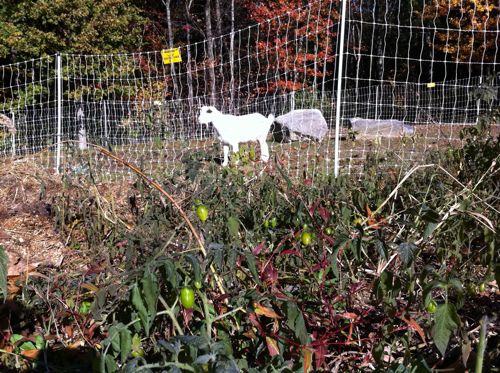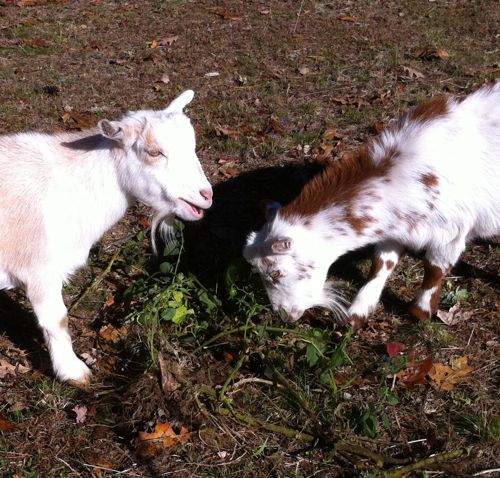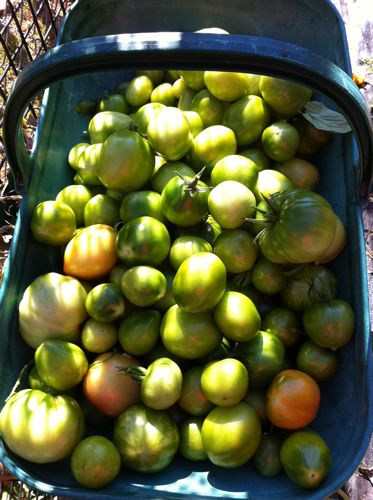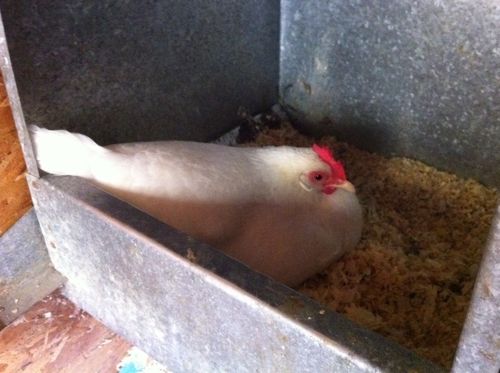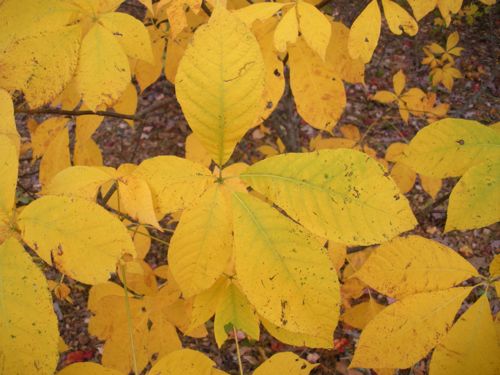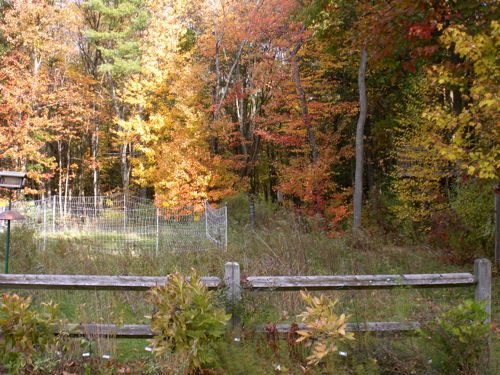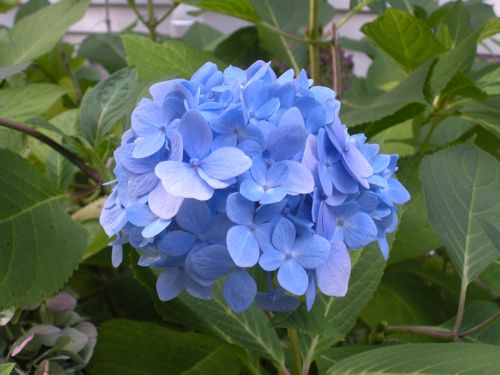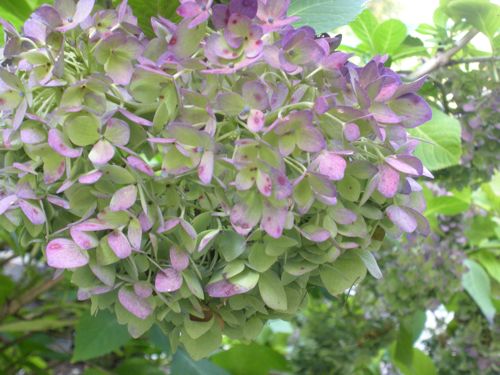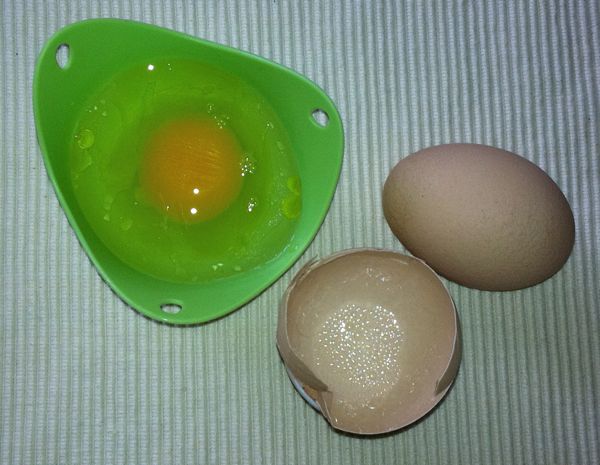Here at HenCam, just about the most asked about topic is about feather loss. Right now it’s molting season, when usually calm hen owners email me in a panic because all of a sudden their hens look like worn-out toy stuffed animals. Rest assured that molting is normal, albeit messy.
I also get queries about hens with bare backs. That’s usually an easy one to answer. 99% of the time, there’s a rooster in with the hens. Roosters claw and pull out feathers during their frequent matings. Sometimes the rooster favors one hen, so her saddle feathers get worn off, while all of the other girls look lovely. If there are open wounds, or her skin is so red that the others peck at her, you’ll have to separate her, or get rid of the rooster.
Most of the feather loss questions, however, are about bare butts. All chickens have short, soft feathers near their vents. This hen (owned by my friend Sharon) has a classic bottom.
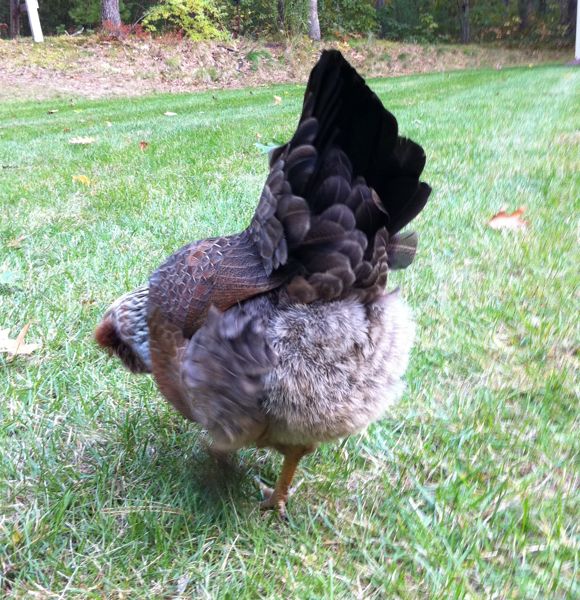
Don’t you just want to pat it? She’s a young bird, hatched in May. She’s only started to lay, and her owner overfeeds her (yes, Sharon, cut back on the corn!) so she’s in fine feather. She won’t molt until next year and there are no roosters about. She’ll never look better than she does now (well, she could go on a bit of a diet.)
My two-year old hens, Agnes and Philomena, are a sleeker breed and never had such gorgeous bottoms. But, lately, they’ve been looking rather ragged. They’re a hybrid, bred for egg laying production. They’ve laid every day for months. Feather loss can be a sign of a good layer. Caloric and nutritional intake goes into egg-making, and the feathers suffer. When Petunia is laying, her neck goes bald. Look at Agnes’s bottom. It’s red and bare. Not a pretty sight, but she’s perfectly healthy. (She’s also molting, so the butt feather loss is more noticeable.)
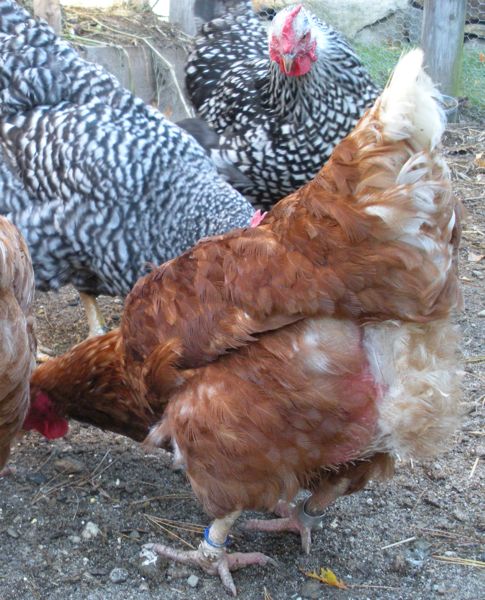
Sometimes, though, bare butts are a sign of parasites. If you see bare skin, always pick up your birds and examine them closely. (To learn how to do this, watch my youtube video.) A lice infestation is first seen near the vent. There will be bare skin and the feather shafts will look like Q-tips.

You might see the lice crawling about. I’ve written about lice here. (And also check the archives for more posts.)
Once in awhile, there will be a feather-picking hen in the group. You might never catch her in the act, but she’ll peck away at the other hens’ vent feathers, until, one day, you notice bare spots and possibly blood. My little Snowball, who was a cheerful, delightful hen, was a feather picker. Some say that a chicken feather picks to make up for a nutritional deficiency. It never hurts to make sure that your hens have access to dirt, minerals, and good feed with protein. However, that wasn’t the case with Snowball. She was active and bored, and discovered that when the big girls dust-bathed, she could move in, peck off the occasional parasite, pull some feathers, and have a good time. Fortunately, before this caused severe problems, the weather turned cold, the hens stopped sprawling in the sun, and Snowball gave up her bad habit.
Regardless of the cause, it’s a good idea to keep an eye on those bare patches of skin. If they’re raw and red, the other hens will peck at them and cause open wounds. It that looks to be a problem in your flock (some groups are more aggressive than others) you can darken the skin with blu-kote (similar to genetian violet in the UK.) It dyes the skin purplish-blue, so the hens don’t peck.
I was envious seeing Sharon’s fluffy-butten pullets. I’m ready for some young birds. I’ve already started my wish-list for a spring chick order.
